René Richard: Tom Thomson of the North
“He knows what he wants to do and his love for the wilds will make another Tom Thomson of him. [...] There is not a Canadian artist, dead or living, who has drawn or can draw in 5 minutes sketches to compare with those of Richard,” wrote Clarence Gagnon from Paris on March 14 1928, about René Richard to Eric Brown, Director of the National Gallery of Canada.
The René Richard paintings reproduced here are excellent examples of his work, confirming his stature as an important and genuinely original Canadian artist of his generation. “His style is clean and firm, his brushstrokes harsh and true”, wrote Clarence Gagnon of his protégé. 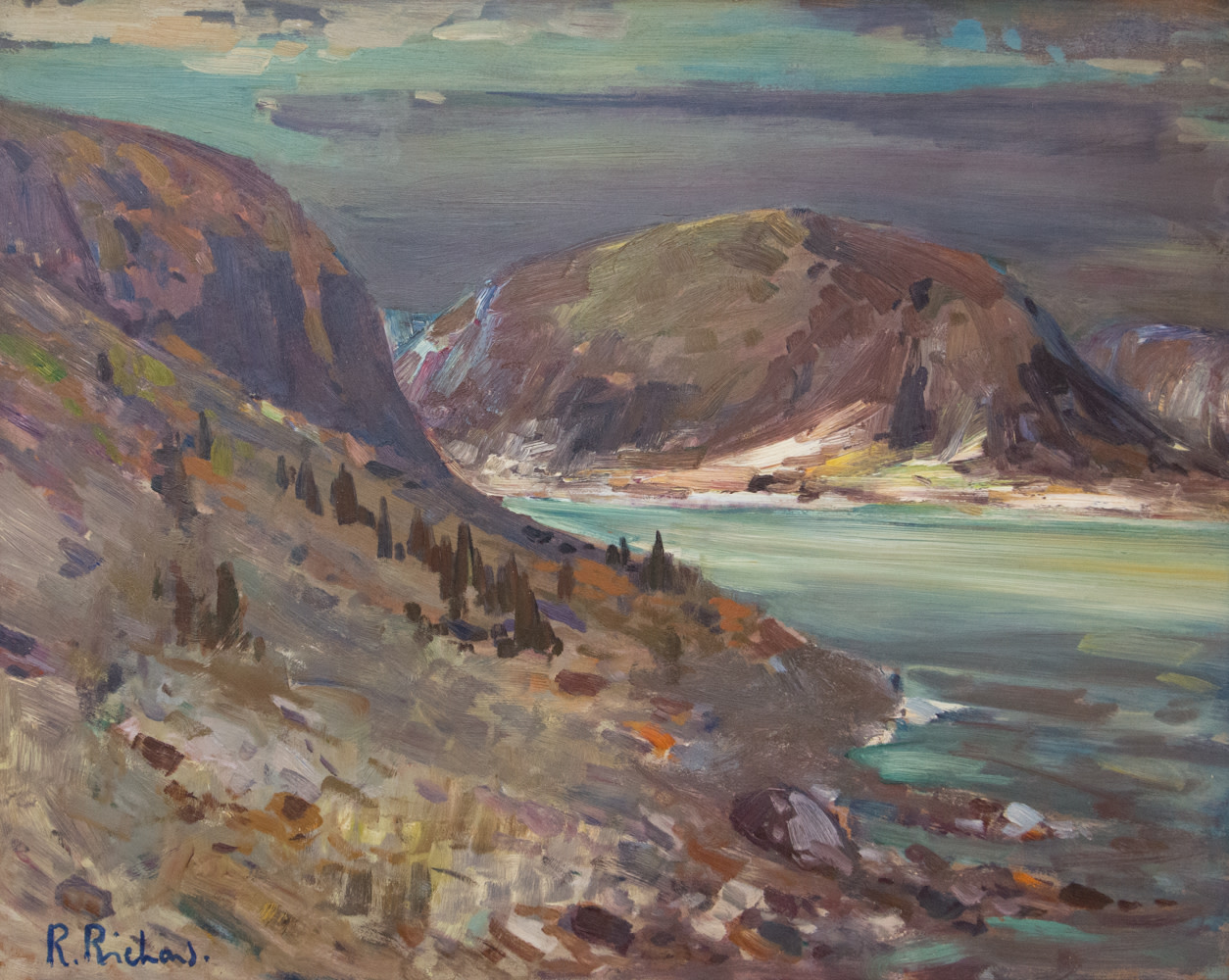
René Richard’s œuvre is in part a first-hand description of the life of a Canadian trapper traveling by canoe, on foot or dog sled in the wildernesses of Alberta, Saskatchewan, Manitoba, the Northwest Territories and later in Quebec. His work is an important contribution to the western Canadian narrative and is, as far as we are aware, one not previously described professionally and artistically by an actual trapper, a trade heralded in the history of the development of Canada. Richard has long enjoyed iconic stature in Quebec but his significant ethnographic works of quality are also relevant to a Canada-wide audience, making him a painter of great national historical importance.
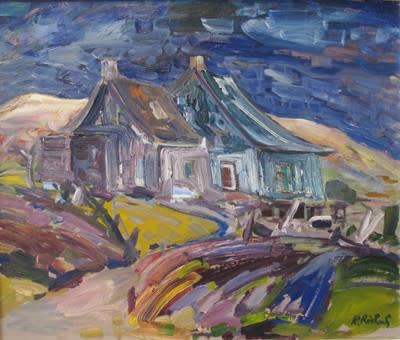
The Old House Dufour, Baie-Saint-Paul, oil on masonite, 24 x 28 in.
In 1909, Richard emigrated with his parents to Canada from Switzerland. After two years in Montreal, the family moved to the remote and isolated area of Cold Lake, Alberta, where his father operated a trading post, selling supplies to indigenous peoples in the region and receiving furs as payment. The exposure to life in the great outdoors seduced Richard in his early teens. He spent the better part of 16 years as a trapper in Western Canada and the plein-air sketches he made during his wilderness expeditions would provide him with lifelong inspiration. His drawings of this period depict the unique experiences of the Canadian trapper and woodsman, of abandoned camps, the woodsman’s canoe, the burning campfire, the trapper's sled dogs, and the occasional glimpses of the camaraderie between trappers.
From 1927 and with Clarence Gagnon’s encouragement, Richard, nicknamed “Slim,” spent three years studying art in Paris where he honed his draughtsmanship and used Gagnon’s studio (his confidently executed drawings post-1930 are of especially fine quality).
In 1928, Clarence Gagnon wrote to Eric Brown, the first director of the National Gallery of Canada:
“He will become a greater artist than Tom Thomson. He ignored the art schools, because after a month here, he could draw better than any of the masters who were teaching him. [...] The “call of the wild” is getting the best of him, and he has made up his mind to return to the Barren Lands where he came from, to resume his trapper’s life and to paint what he had been dreaming of for years up in the Delta of the Mackenzie. [...] I’ll be damn mistaken if he doesn’t turn out a greater artist than Tom Thomson, I wish you will keep in touch with him so that we may see some of his things on exhibition.” 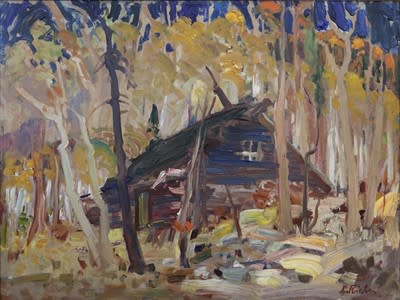
Trappers' Cabin, oil on masonite, 18 x 23 1/2 in.
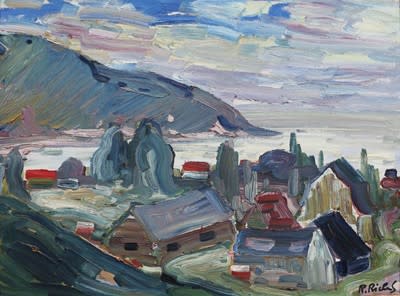
Baie St. Paul, oil on masonite, 24 x 28 in.
Richard returned to Western Canada to paint, but the Depression forced him to seek once again a livelihood in trapping. In 1938, he joined Gagnon in Montreal but soon escaped the city to settle in Baie-Saint-Paul, purchased the former home of Clarence Gagnon in 1940 and devoted himself to painting, leaving charcoal and pastels to paint primarily in oils. In an interview in La Presse, Montreal in 1963, Richard himself describes this period:
“I settled down in Baie-St-Paul in 1940. [...] Clarence Gagnon, who came to visit had lived there 14 years! And myself? I would never leave this area. The Côte Nord, it’s a beautiful country. We are surrounded by forests. We live by the Gouffre River. There are marvelous sights. The Laurentide Park is not too far away, up high, the Saguenay, it’s at the side, the river, the Chantier roads with wide open forest. Now, I always work but more calmly.”
His landscapes from this period, rarely titled or, if so, with generic titles like ''Encampement indien,” are often misconstrued as Quebec vistas. In fact however, he regularly used as reference the fine drawings of his earlier trapping days in the 1930s in Western Canadian, areas including the Churchill River, Fort McMurray and Jasper regions. Of course, his legacy also boasts a strong and extensive body of work depicting the Charlevoix area where he delighted in the landscapes of Ungava, the Saguenay River, and the Quebec North Shore. 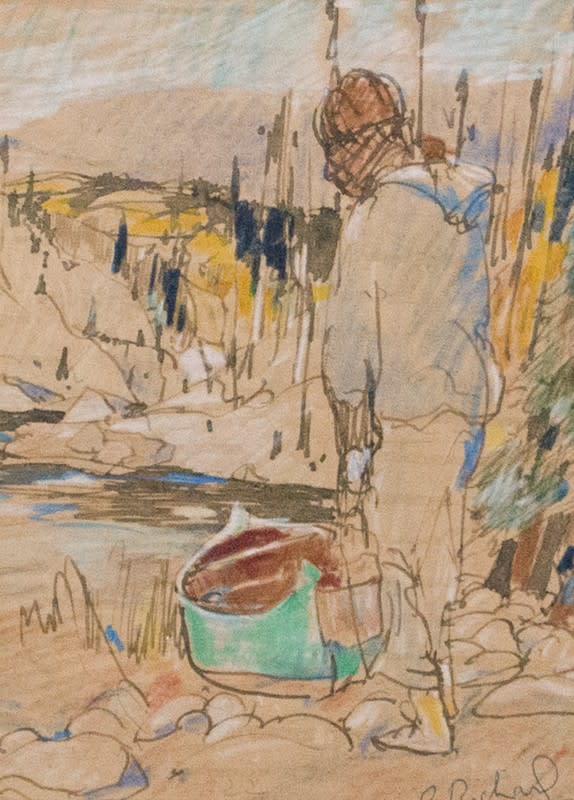
Trapper with Canoe, mixed media, 8 x 6.5 in. Click here to view more details.
René Richard as artist and trapper was further mythologised by Manitoba-born novelist, Gabrielle Roy, who was Richard’s friend and neighbour in Charlevoix. She modeled Pierre Cadorai, the protagonist of her acclaimed novel La Montagne secrète (1962), on René Richard, hailing the legendary figure he embodied and illustrating the nature of the artist’s quest for creativity, the patient search for meaning in art and in life. Roy portrays the painter’s nomadic and solitary years surrounded by nature, sometimes friendly and often inhospitable, his rare encounters with others in the mythic landscapes of the Great Canadian North, and the slow mastery of his art. He returns from his outings with pochades he sets forth with a kind of wild impetuosity. […] If René Richard incorporated as a person the distress of a human forced to live through winters all alone at the end of the world, he is also the one who translated the joy of one solitary person meeting another. […] One day I noticed that when he returned from his outings, René Richard referred to the paintings he brought back as “catches” or something he “captured.” He would say, for example: “Today I picked up four pochades.” - Gabrielle Roy (translated by Galerie Alan Klinkhoff).
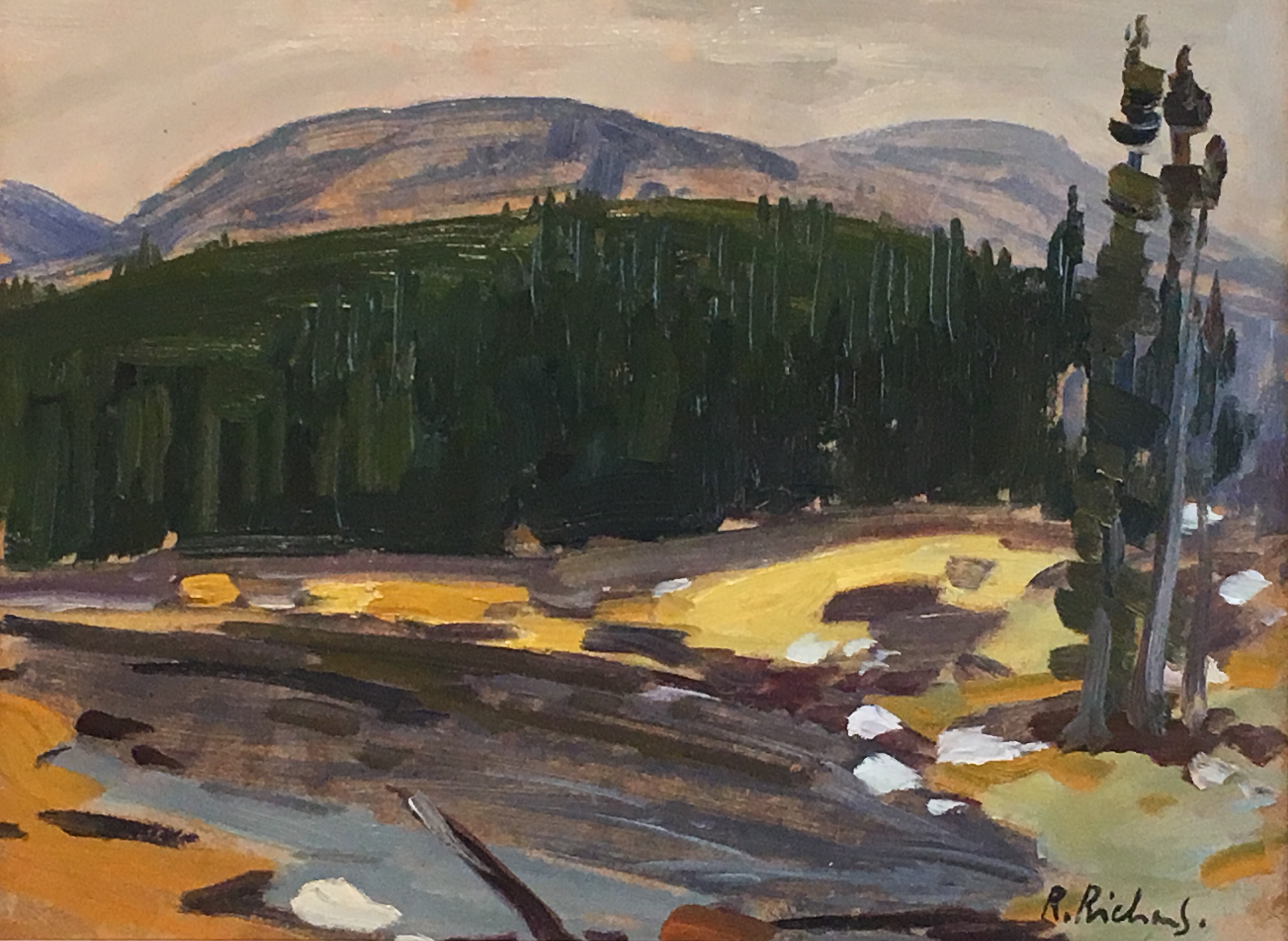
Laurentide Park, oil on panel, 12 x 16 in.
Unlike Jean-Paul Lemieux and other post-world-war II figuratives artists, René Richard, living in Baie-St-Paul, offered his paintings through galleries only as far as away as Montreal, relegating him to anonymity outside of Québec. He is however a first-tier artist of national importance and will one day be recognized from coast to coast. René Richard paintings are extraordinary “value” purchases at this time: paintings of integrity, quality and originality. We encourage your purchase of these excellent works of art.
Alan Klinkhoff 2016
Post scriptum: It is noteworthy that the provenance of Richard’s Ungava, circa 1948 is Mr A. Sidney Dawes (1888-1968), a successful Canadian businessman living in Montreal, an avid art collector owning several sketched by Tom Thomson, paintings by Lawren Harris, Franklin Carmichael and others. He was a also member of the Wapoos Sibi Club, a fishing and game club located in the Laurentians, noted for speckled trout, moose, bear and small game. I
n the summer of 1940, Mr Dawes wrote René Richard offering him a job as a guide at the club, authorizing him to trap there in the winter, and where he would have plenty of time to paint. Dawes even offered to help him sell his furs at the end of the winter! Dawes encouraged him to contact Philippe Parent at the Wapoos Sibi Club: Parent has a certain clientèle to visit him and you could easily earn your keep with him, and at the same time have lots of time to paint, and by selling your paintings you would obtain what ready money you needed, so as to buy a proper outfit and any other expenses that you might have. [...]Regarding a place to trap in the winter, as I have already told you, there are cabins at Red Pine lake and the old Wapoos Sibi far up the river, both of which you can use and you can also have these trapping territories provided you let us know in advance so that we can stop the guardian from trapping there, as he has lots of room elsewhere. In the spring, I would be glad to sell your fur for you and credit your account with the proceeds, so that this would enable you to pay for what supplies you had taken from us and whatever the surplus was I would hand over to you. I have suggested these two alternatives because I believe that your main interest is in painting, and that these jobs would suit you because they would leave you lots of leisure to devote to your art.






